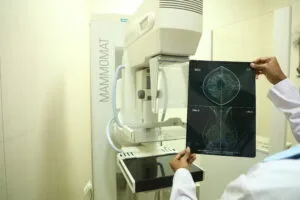Typhoid – Signs and Symptoms

AN OVERVIEW:
WHO estimates the global typhoid fever disease burden at 11-20 million cases annually, resulting in about 128,000–161,000 deaths annually. In recent years, data indicates that typhoid fever is a major cause of morbidity among the urban and peri-urban populations and the single most important cause of febrile bacteraemia fever caused by bacteria in the bloodstream.
Typhoid fever is an infection caused by the bacterium Salmonella typhi. It is usually spread through contaminated food or water. Once Salmonella typhi bacteria are eaten or drunk, they multiply and spread into the bloodstream. The bacteria live in the bloodstream and intestines of human beings.
SYMPTOMS OF TYPHOID
Signs and symptoms of typhoid fever develop gradually with the incubation period usually being 7 to 14 days. The risk of contracting typhoid is higher in populations that lack access to safe water and adequate sanitation. Poor communities and vulnerable groups including children are at highest risk.
- High grade fever
- Headache
- Nausea
- Fatigue and weakness
- Weight loss and loss of appetite
- Diarrhoea or constipation
- Skin Rashes
- Swollen abdomen
COMPLICATIONS OF TYPHOID FEVER
The most dangerous complication of typhoid fever is intestinal perforations and bleeding. A perforated intestine means the development of a hole in the large bowel or small intestine. This condition is characterized by leaking of the intestinal content into the abdominal cavity causing nausea, abdominal pain, sepsis, and vomiting. This is a life-threatening complication needing immediate medical attention. So, despite having treatments for typhoid, it is not a disease to be taken lightly.
DIAGNOSTICS TESTS IN TYPHOID ARE AS FOLLOWS:
- IgM – Detection of S.Typhi specific IgM antibodies serves as a marker for recent infection and can be detected as early as 2-3 days after onset of symptoms.
- Blood Culture – Laboratory diagnosis of typhoid fever requires isolation and identification of Salmonella enterica serotype Typhi. Blood Culture is considered as gold standard for diagnosis of typhoid and is best when performed within a week of onset of symptoms. Multiple blood cultures with larger sample volumes always yield better results.
- Real Time PCR – PCR is a molecular test for diagnosis of typhoid and is ideally performed within the first 5 days.
Suburban Diagnostics’ FD-5 or Fever Detect 5 in 1 is a PCR based test which can detect 5 common monsoon fevers namely; Dengue, Chikungunya, Malaria, Leptospirosis and Typhoid from a one-time blood sample.
The Widal test, developed in the late 1800s, is simple and inexpensive, but it should not be used for diagnosis, as it is frequently inaccurate due to cross-reactivity with other infectious agents. Hence Widal is considered as obsolete test for diagnosis of typhoid.
MEASURES TO PREVENT TYPHOID
We know that typhoid is a significant public health issue and proven prevention and treatment solutions are available now. By accelerating access to safe water, sanitation, and hygiene interventions and typhoid vaccines, lives can be saved with better health outcome.
Take the first step towards having a healthier you, book a blood test online.
SOURCES:
- World Health Organisation
- Infectious diseases in clinical practice – Typhoid fever: Current concepts



